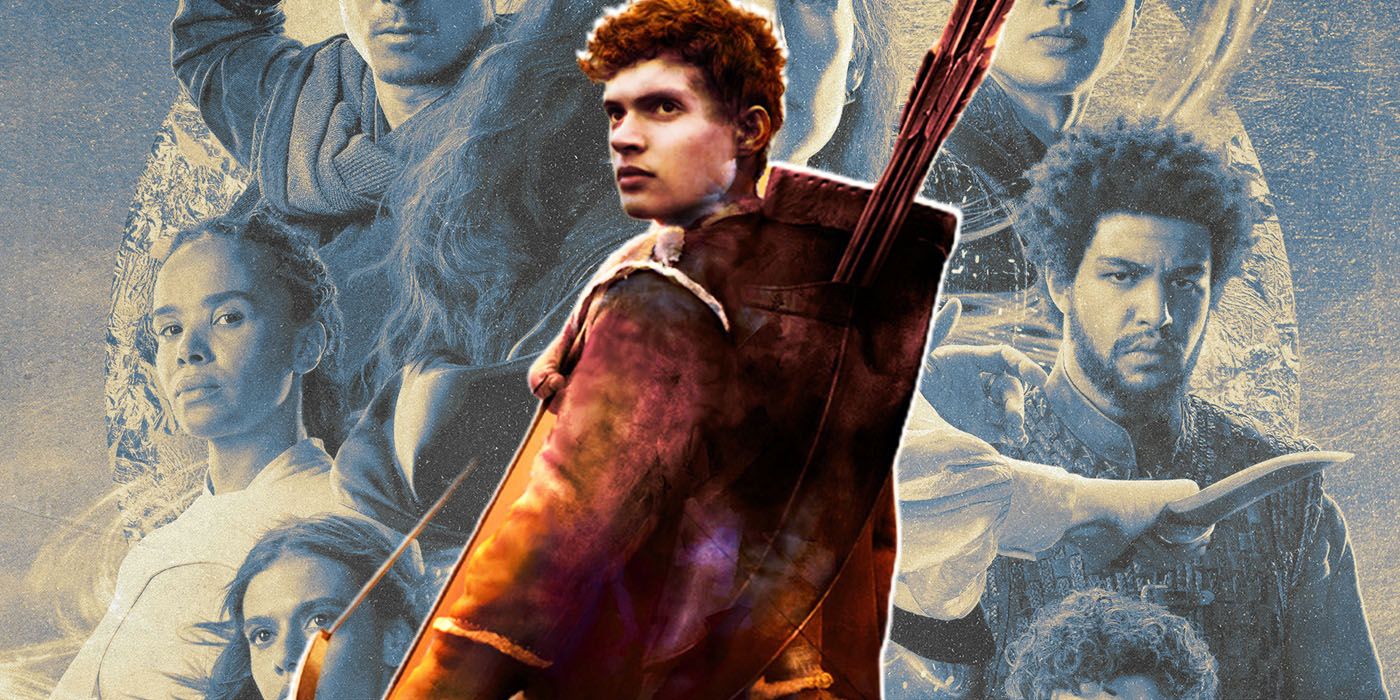The Wheel of Time is a universe with rich lore that has barely been explored by the series’ two seasons. The Wheel of Time has become a fantasy staple, overthrowing even Game of Thrones for the top spot. Since Amazon Prime’s fantasy phenomenon is based on a long book series by Robert Jordan, a lot of the world’s history around its main characters or concepts has yet to come up in the TV series or has only been touched on briefly. At the core of the story in The Wheel of Time is telling the story of the Dragon. While avid book fans know how the story progresses from the very beginning, newer fans of the TV show may be a bit lost in all of the intricacies of Jordan’s lore and how it’s being adapted to best fit the television series. The small screen may not have room to provide an in-depth explanation of the prophecies surrounding the Dragon, but understanding them makes watching The Wheel of Time that much more satisfying.There are many prophecies regarding the Dragon in The Wheel of Time. While the Karaethon Cycle is the central prophecy referred to when speaking of the Dragon and the Dragon Reborn, there are plenty of others recorded by different cultures during different parts of time. These prophecies include the Prophecy of Rhuidean (also known as the Aiel Prophecy), the Jendai Prophecy, the Prophecies of the Shadow, and the Essanik Cycle. Some of these prophecies contain much of the same content, while others, when put together, provide an even wider-stretching understanding of the Dragon’s rise. With Season 1 of The Wheel of Time revealing that the Dragon Reborn is, indeed, Rand Al’Thor and that his journey is far from over, understanding what’s been prophetized helps fans identify Easter eggs throughout The Wheel of Time, like the one in the first episode.At its core, the Karaethon Cycle is a collection of Foretellings, which are an ability intricately entwined with the One Power throughout The Wheel of Time. Channelers of the One Power can have special abilities called Talents. These abilities are not the same nor available for all channellers, even among the Aes Sedai. Foretelling is classified as a Talent — even though enacting it doesn’t actively use the One Power — and is known as the ability to tell aspects of the future with striking accuracy or clarity. Something that is Foretold is often recorded by someone other than the Foreteller, much like The Wheel of Time’s principle Foreteller, Min. This is because someone with the Talent of Foretelling cannot control when they see the future or what they see and are often unable to remember their Foretelling, even if they speak it out loud. All the Foretellings within the Karaethon Cycle have to do with the Dragon, the mythical hero of The Wheel of Time’s overarching story.How The Wheel of Time Is Better Than The Rings of PowerThe Wheel of Time Showrunner Rafe Judkins Clarifies Changes to the Prophecies of the Dragon
The Wheel of Time is a universe with rich lore that has barely been explored by the series’ two seasons. The Wheel of Time has become a fantasy staple, overthrowing even Game of Thrones for the top spot. Since Amazon Prime’s fantasy phenomenon is based on a long book series by Robert Jordan, a lot of the world’s history around its main characters or concepts has yet to come up in the TV series or has only been touched on briefly. At the core of the story in The Wheel of Time is telling the story of the Dragon. While avid book fans know how the story progresses from the very beginning, newer fans of the TV show may be a bit lost in all of the intricacies of Jordan’s lore and how it’s being adapted to best fit the television series. The small screen may not have room to provide an in-depth explanation of the prophecies surrounding the Dragon, but understanding them makes watching The Wheel of Time that much more satisfying.
There are many prophecies regarding the Dragon in The Wheel of Time. While the Karaethon Cycle is the central prophecy referred to when speaking of the Dragon and the Dragon Reborn, there are plenty of others recorded by different cultures during different parts of time. These prophecies include the Prophecy of Rhuidean (also known as the Aiel Prophecy), the Jendai Prophecy, the Prophecies of the Shadow, and the Essanik Cycle. Some of these prophecies contain much of the same content, while others, when put together, provide an even wider-stretching understanding of the Dragon’s rise. With Season 1 of The Wheel of Time revealing that the Dragon Reborn is, indeed, Rand Al’Thor and that his journey is far from over, understanding what’s been prophetized helps fans identify Easter eggs throughout The Wheel of Time, like the one in the first episode.
At its core, the Karaethon Cycle is a collection of Foretellings, which are an ability intricately entwined with the One Power throughout The Wheel of Time. Channelers of the One Power can have special abilities called Talents. These abilities are not the same nor available for all channellers, even among the Aes Sedai. Foretelling is classified as a Talent — even though enacting it doesn’t actively use the One Power — and is known as the ability to tell aspects of the future with striking accuracy or clarity. Something that is Foretold is often recorded by someone other than the Foreteller, much like The Wheel of Time‘s principle Foreteller, Min. This is because someone with the Talent of Foretelling cannot control when they see the future or what they see and are often unable to remember their Foretelling, even if they speak it out loud. All the Foretellings within the Karaethon Cycle have to do with the Dragon, the mythical hero of The Wheel of Time‘s overarching story.
#Wheel #Time #Prophecies #Dragon #Explained
Note:- (Not all news on the site expresses the point of view of the site, but we transmit this news automatically and translate it through programmatic technology on the site and not from a human editor. The content is auto-generated from a syndicated feed.))



